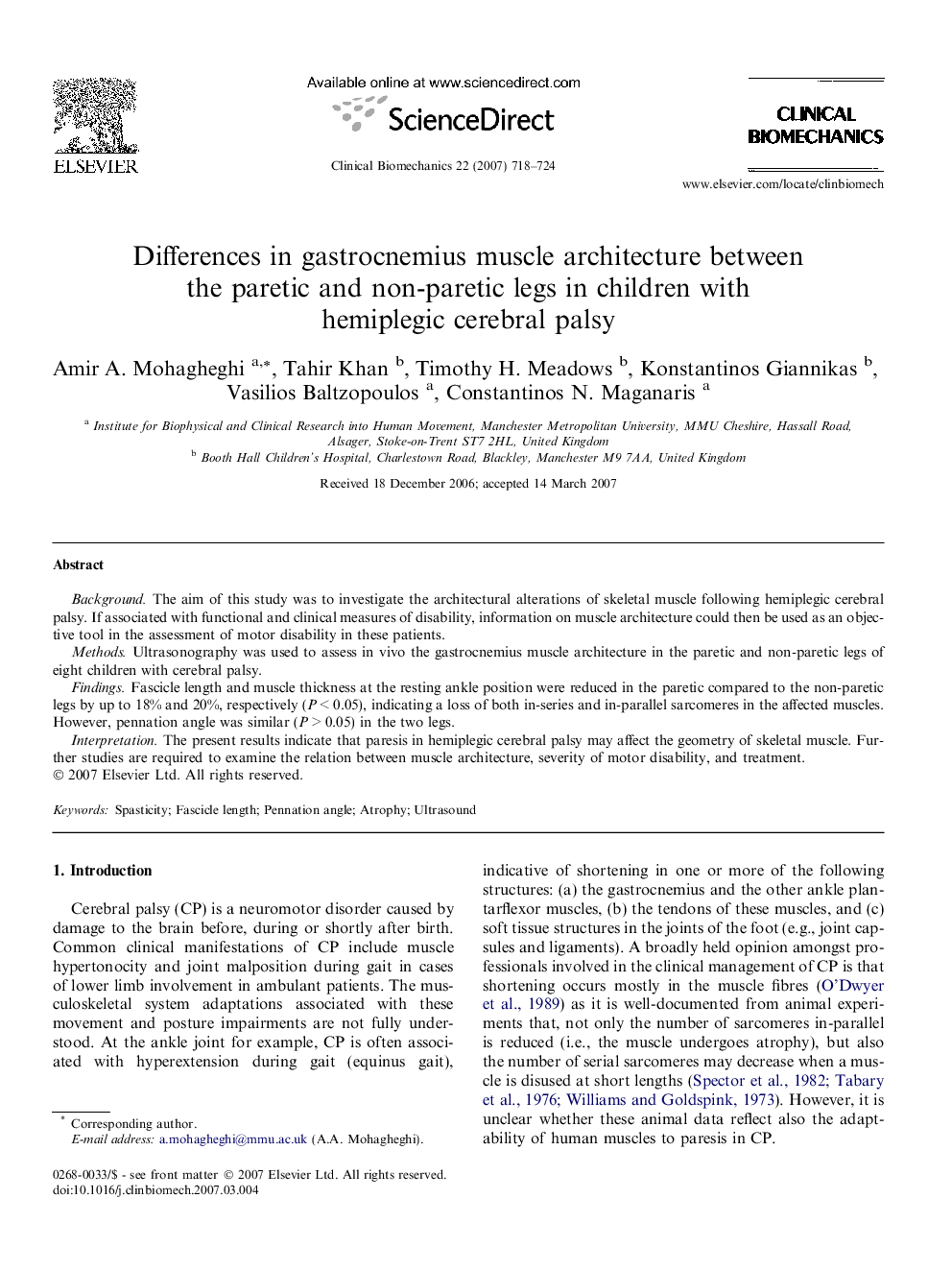| Article ID | Journal | Published Year | Pages | File Type |
|---|---|---|---|---|
| 4051639 | Clinical Biomechanics | 2007 | 7 Pages |
BackgroundThe aim of this study was to investigate the architectural alterations of skeletal muscle following hemiplegic cerebral palsy. If associated with functional and clinical measures of disability, information on muscle architecture could then be used as an objective tool in the assessment of motor disability in these patients.MethodsUltrasonography was used to assess in vivo the gastrocnemius muscle architecture in the paretic and non-paretic legs of eight children with cerebral palsy.FindingsFascicle length and muscle thickness at the resting ankle position were reduced in the paretic compared to the non-paretic legs by up to 18% and 20%, respectively (P < 0.05), indicating a loss of both in-series and in-parallel sarcomeres in the affected muscles. However, pennation angle was similar (P > 0.05) in the two legs.InterpretationThe present results indicate that paresis in hemiplegic cerebral palsy may affect the geometry of skeletal muscle. Further studies are required to examine the relation between muscle architecture, severity of motor disability, and treatment.
